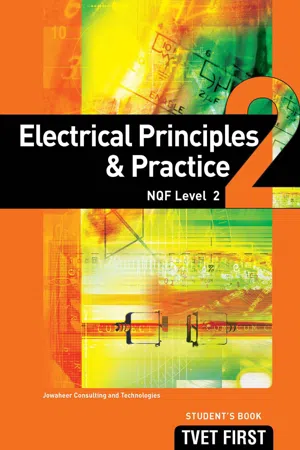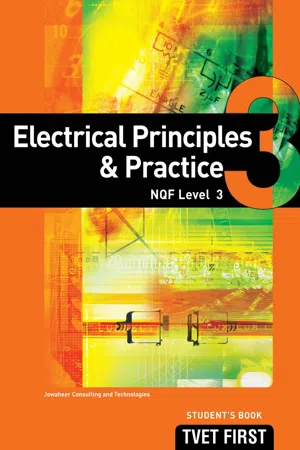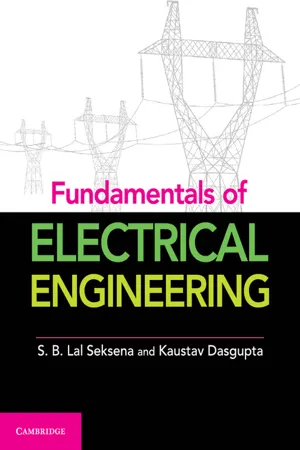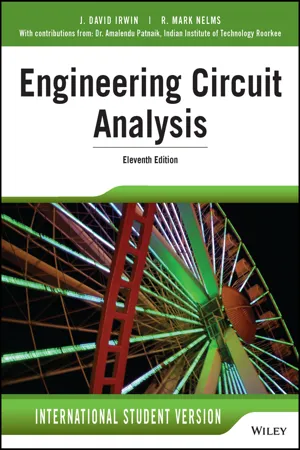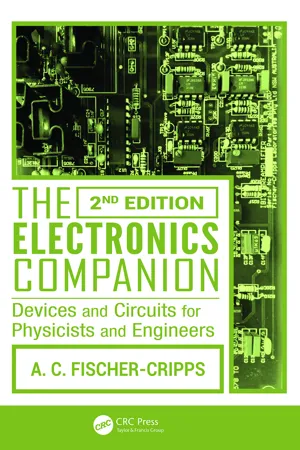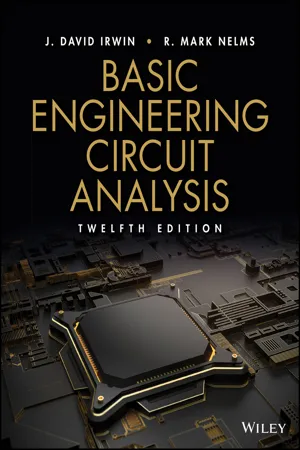Physics
Basics of Electricity
The basics of electricity involve the study of electric charge, current, voltage, and resistance. Electric charge is the fundamental property of matter that creates electric fields, while current is the flow of electric charge. Voltage is the difference in electric potential between two points, and resistance is the opposition to the flow of electric current in a material.
Written by Perlego with AI-assistance
Related key terms
1 of 5
9 Key excerpts on "Basics of Electricity"
- eBook - PDF
Electrical Principles & Practice NQF2 SB
TVET FIRST
- Jowaheer Consulting and Technologies(Author)
- 2013(Publication Date)
- Macmillan(Publisher)
28 Topic 2 Electric and magnetic theories Module 2 Fundamentals of electricity Overview In this module you will gain an understanding of the basic principles of electricity. You will become familiar with the following terms: potential difference, electromotive force, conventional current flow, electron current flow, resistance, power and energy. You will do calculations using Ohm’s law, Kirchhoff ’s laws, the formulae for power and energy, and Joule’s law. By the end of this module, you will be able to: • explain the fundamental concepts and terms used in electricity Range: atom, electron, ionised atom, positive and negative charge, conductors and insulators, potential difference, electromotive force, conventional and electron current flow, resistance and Ohm’s law, power and energy • explain the units of measurement of electric entities • explain, with an illustration, the relationship between electrical entities using a series circuit containing a battery, switch and a resistive component. • explain what Ohm’s law is and identify the formula used for calculations • explain what Joule’s law is and identify the formula used for calculations • perform calculations on resistance, energy and power using the correct formulae and units of measurement (SI units) Range: calculate resistance, voltage, current, energy and power. - eBook - PDF
- Lloyd Dingle, Michael H Tooley(Authors)
- 2013(Publication Date)
- Routledge(Publisher)
5 Electrical fundamentals 5.1 INTRODUCTION In today’s world, electricity is something that we all take for granted. So, before we get started, it is worth thinking about what electricity means to you and, more importantly, how it affects your life. Think, for a moment, about where and how electricity is used in your home, car, workplace or college.You will quickly conclude that electricity is a means of providing heat, light, motion and sound. You should also conclude that electricity is invisible – we only know that it is there by looking at what it does! Now let us turn to the world of aircraft and flight. Although it may not be obvious at first sight, it is fair to say that an aircraft just could not fly without electricity. Not only is electricity used to provide a means of ignition for the engines, but it also supplies the lighting and instruments within an aircraft as well as the navigational aids and radio equipment essential for safe flight in a modern aircraft. Electricity is used to heat windows, pump fuel, operate brakes, open and shut valves, and control numerous other systems within the aircraft. In fact, aircraft that use modern “fly-by-wire” controls could not even get off the ground without the electrical systems and supplies that make them work! In this chapter we will explain electricity in terms of electric charge, current, voltage and resistance. We will begin by introducing you to some important concepts, including the Bohr model of the atom and the fundamental nature of electric charge and conduction in solids, liquids and gases. Next we will look briefly at static electricity before moving on to explain some of the terminology that we use with electric circuits and measurements. We also describe some of the most common types of electrical and electronic components, including resistors, capacitors, inductors, transformers, generators and motors. - eBook - PDF
Electrical Principles & Practice NQF3 SB
TVET FIRST
- Jowaheer Consulting and Technologies(Author)
- 2014(Publication Date)
- Macmillan(Publisher)
2 Module 1 Fundamental concepts of electricity Module 1: Fundamental concepts of electricity Overview At the end of this module you will be able to: Unit 1.1: • Distinguish the following fundamental concepts and terms used in electricity: Range: Structure of an atom, atomic number, atomic mass, electrons, free electrons, charge, electromotive force, current, potential difference and resistance. Unit 1.2: • Explain the effect of temperature on materials: Range: Metals, carbon, insulator, alloys and semiconductor . Introduction Electricity is the most useful source of energy there is. We rely on electricity to run our homes, businesses and industries. Can you imagine what life would be like without electricity? Applications of electricity are limitless and often extend beyond our imagination. In level 2 you learnt that all matter is made up of tiny units or particles called atoms . Elements like gold, copper and carbon are made up of atoms. The atom is the smallest part of an element that can exist and still retain the properties of the element. In this module we will investigate the fundamental concepts of electricity. Unit 1.1: Atomic theory Background The ancient Greeks first came up with the idea of the atom as far back as the 5th century BC. The Greek philosophers, Leucippus and Democritus, were the first to suggest that matter is made up of tiny particles that cannot be split into smaller pieces. The word ‘atom’ comes from the Greek word ‘atomos’ which means ‘cannot be cut’. In 1805, John Dalton (1766–1844) developed the atomic theory. This theory states that matter is made up of small particles called atoms and that each chemical element has its own kind of atom, in contrast to earlier ideas that atoms were essentially alike. It also states that chemical changes take place between atoms or groups of atoms. Many other scientists also contributed to the atomic theory. - S. B. Lal Seksena, Kaustuv Dasgupta(Authors)
- 2017(Publication Date)
- Cambridge University Press(Publisher)
Prerequisite knowledge Current electricity of +2 standard Static electricity of +2 standard 1.1 Introduction The recorded observations related to various electrical events and facts are found dating back to the fifth century BC. The lighting in a stormy night, or the attraction between a rubbed amber and cat’s fur have always provoked human curiosity. But, it was merely a subject of the philosopher’s mind, rather than the business of technology. It was only in the mid-sixteenth century that scientists developed techniques to store electrical charge. Suddenly, like a flash of thunder, everything was changed. We were able to convert a spontaneous event into a continuous operation. The technology had shifted from the era of the mechanical intentions to the era of electrical progression. We can call it a paradigm shift of technology. Like any other paradigm shift, this change did not occur overnight. We have achieved the great electrical inventions through gradual efforts by scientists. Different theories and formulae had made it possible. In this chapter, we are going to discuss these preliminary concepts and related theories to begin with, starting with static electrical charges to laws of current electricity. We shall also observe that the application of these theories requires a great deal of measurement and quantification of various electrical parameters, such as electrical potential, current flow and resistance. Let us explore this world of electricity from the perspective of an electrical engineer. 1.2 Charge Electrical charge is the fundamental concept of electricity. In a mechanical system ‘the matter’ matters, for an electrical system the charge takes all the charges. We conceptualize our materialistic world as an accumulation of particles. In the electrical domain, it is the charge of a particle; we are more concerned about it. Every atom is constituted of a number of charges. There are two types of charges which play major roles in electricity.- eBook - PDF
- J. David Irwin, R. Mark Nelms, Amalendu Patnaik(Authors)
- 2015(Publication Date)
- Wiley(Publisher)
EXPERIMENTS THAT HELP STUDENTS DEVELOP AN UNDERSTANDING OF BASIC ELECTRIC CIRCUIT CONCEPTS ARE: ■ Breadboard Basics: Learn the operation of a digital multi- meter while mapping the connections on a breadboard via resistance measurements. ■ Resistance Tolerances: Measure the resistance of real resistors and apply statistical analysis to the experimental values to explain nominal resistance and tolerance. ■ Voltage Polarity and Direction of Current: Discover how dc currents and voltages are measured using a digital multi- meter so that the resulting power calculated follows the passive sign convention. 1 Basic Concepts CHAPTER 1 THE LEARNING GOALS FOR THIS CHAPTER ARE THAT STUDENTS SHOULD BE ABLE TO: ■ Use appropriate SI units and standard prefixes when calcu- lating voltages, currents, resistances, and powers. ■ Explain the relationships between basic electrical quanti- ties: voltage, current, and power. ■ Use the appropriate symbols for independent and depend- ent voltage and current sources. ■ Calculate the value of the dependent sources when ana- lyzing a circuit that contain independent and dependent sources. ■ Calculate the power absorbed by a circuit element using the passive sign convention. The system of units we employ is the international system of units, the Système International des Unités, which is normally referred to as the SI standard system. This system, which is composed of the basic units meter (m), kilogram (kg), second (s), ampere (A), kelvin (K), and candela (cd), is defined in all modern physics texts and therefore will not be defined here. However, we will discuss the units in some detail as we encounter them in our subsequent analyses. The standard prefixes that are employed in SI are shown in Fig. 1.1. Note the decimal relationship between these prefixes. These standard prefixes are employed throughout our study of electric circuits. 1.1 System of Units - Mark Z. Jacobson(Author)
- 2020(Publication Date)
- Cambridge University Press(Publisher)
C H A P T E R 4 Electricity Basics A 100 percent wind-water-solar (WWS) energy infra-structure involves electrifying or providing direct heat for all energy sectors and then providing the electricity or heat with WWS. Because electricity is such a large part of the solution, understanding how it works is important. In addition, WWS technologies convert either mechan-ical or solar energy into electricity. This chapter provides the basic information for understanding those conversion processes, which are elaborated on in Chapters 5 (solar energy) and 6 (wind energy). This chapter discusses the Basics of Electricity with a particular focus on electric power. It starts by examining different types of electri-city – static electricity, lightning, and wired electricity. It then covers voltage and Kirchoff ’ s laws of voltage and current. Next, it turns to power, resistance in series and parallel, and capacitors. This is followed by a discussion of electromagnetism, AC electricity, and inductors. Both single-phase and three-phase AC electricity, as well as generators, are then described. Finally, real and reactive power, transformers, and transmission, including high voltage AC and DC transmission, are covered. 4.1 Static Electricity, Lightning, and Wired Electricity Electricity is the free-fl owing movement of charged par-ticles, usually either negatively charged electrons, nega-tively charged ions, or positively charged ions. The fl ow of electric charge constitutes an electric current . The moving charged particles in a current are called charge carriers . Thus, charge carriers can either be electrons, negative ions, or positive ions. Electricity can travel in a wire or another medium, including the air. This chapter discusses primarily electri-city through wires with application to electric power systems. Two other types of electricity are static electricity and lightning.- eBook - PDF
- Richard L. Myers(Author)
- 2005(Publication Date)
- Greenwood(Publisher)
Electricity Introduction Whenever you flip a light switch, start a car, or use an appliance, you deal with some aspect of electricity. Many of our daily activities use some form of electricity. It is hard to imagine life in a world without electricity. Yet, electrical power has only been common in the United States for the past century and still is a luxury in many parts of the world. While we tend to think of electricity in terms of its practical appli- cations, electricity also plays a primary role in the physiology of many animals includ- ing humans. Electrical impulses stimulate nerves and relay messages to the brain. Two hundred years ago it was recognized that electricity and magnetism were related properties that could be unified under a single concept called electromagnetism. Before examining electromagnetism in the next chapter, this chapter will introduce the basic principles of electricity and some of its applications in our lives. History The phenomenon called electricity has been observed since the earliest days of humans. Lightning struck fear in our prehistoric ancestors and led to supernatu- ral explanations for the displays accepted today as natural atmospheric occurrences. The ancient Greeks observed that when a tree resin they called elektron hardened into amber, it possessed a special attractive property. When amber was rubbed with fur or hair, it attracted certain small objects. The Greek Thales observed this attrac- tive property and noted the same property existed in certain rocks. Thales' attractive rock was lodestone (magnetite), which is an iron-bearing mineral with natural magnetic properties. The modern study of electricity commenced with the publication of William Gilbert's (1544-1603) De Magnete in 1600. Gilbert coined the word "electricity" from the Greek elektron and proposed that the Earth acted as a giant magnet. - eBook - PDF
The Electronics Companion
Devices and Circuits for Physicists and Engineers, 2nd Edition
- Anthony C. Fischer-Cripps(Author)
- 2014(Publication Date)
- CRC Press(Publisher)
1 Electricity 1 1. Electricity 1. Electricity Summary 2 2 1 d q q k F E q F 1 A Q k E 4 Force between two charges where Force on a charge in a field Electric field - point charge o 4 1 k 2 ˆ r r q k E EA ) ( ) ( 2 2 2 1 1 1 v n q v n q A I dt dq i Ed q W V 1 Electric field - point charge Electric flux Electric current Electric potential R I V R I VI P 2 A R l d A V Q C o l 2 o N A L 2 2 1 CV U 2 2 1 LI U 2 1 2 1 2 1 1 1 1 R R R R R R R R AB AB 2 1 R R R AB Ohm's law Power - resistor Resistivity Capacitance Inductance Energy - capacitor Energy - inductor Resistors - series Resistors - parallel 2 1 1.1 Electricity The Electronics Companion 2 Consider a circuit in which a battery is connected to a light bulb through a switch. Light & heat energy + Chemical energy Switch In this simple electrical system, chemical energy is converted into electrical energy in the battery. The electrical energy travels along the wires to the light bulb where it is converted into heat and light. The switch is used to interrupt the flow of electrical energy to the light bulb. Although such an electrical system may seem commonplace to us now, it Electrical energy was only invented about 100 years ago. For thousands of years before this, light and heat were obtained by burning oil or some other combustible fuel (e.g., wood). Although the concept of electric charge was known to the ancient Greeks, and electricity as we know it was well-studied in the 19th century, it remained a scientific curiosity for many years until it was put to use in an engineering sense. In the early part of the 20th century, electrical engineering was concerned with motors, generators and generally large scale electrical machines. In the second half of the 20th century, advances in the understanding of the electronic structure of matter led to the emergence of the new field of l t i I iti ll l t i i it b ilt d l ti l l electronics. - eBook - PDF
- J. David Irwin, R. Mark Nelms(Authors)
- 2021(Publication Date)
- Wiley(Publisher)
In addition to these two types of currents, which have a wide variety of uses, we can generate many other types of currents. We will examine some of these other types later in the book. In the meantime, it is interesting to note that the magnitude of cur- rents in elements familiar to us ranges from soup to nuts, as shown in Fig. 1.4. I 1 = 2 A I 2 = −3 A (a) (b) Circuit 1 Circuit 2 FIGURE 1.2 Conventional current flow: (a) positive current flow; (b) negative current flow. i(t) t t i(t) (a) (b) FIGURE 1.3 Two common types of current: (a) alternating current (ac); (b) direct current (dc). 1.2 Basic Quantities 3 We have indicated that charges in motion yield an energy transfer. Now we define the voltage (also called the electromotive force, or potential) between two points in a circuit as the difference in energy level of a unit charge located at each of the two points. Voltage is very similar to a gravitational force. Think about a bowling ball being dropped from a ladder into a tank of water. As soon as the ball is released, the force of gravity pulls it toward the bottom of the tank. The potential energy of the bowling ball decreases as it approaches the bottom. The gravitational force is pushing the bowling ball through the water. Think of the bowling ball as a charge and the voltage as the force pushing the charge through a circuit. Charges in motion represent a current, so the motion of the bowling ball could be thought of as a current. The water in the tank will resist the motion of the bowling ball. The motion of charges in an electric circuit will be impeded or resisted as well. We will introduce the concept of resistance in Chapter 2 to describe this effect. Work or energy, w(t) or W , is measured in joules (J); 1 joule is 1 newton meter (N . m). Hence, voltage [υ (t) or V] is measured in volts (V), and 1 volt is 1 joule per coulomb; that is, 1 volt = 1 joule per coulomb = 1 newton meter per coulomb.
Index pages curate the most relevant extracts from our library of academic textbooks. They’ve been created using an in-house natural language model (NLM), each adding context and meaning to key research topics.
